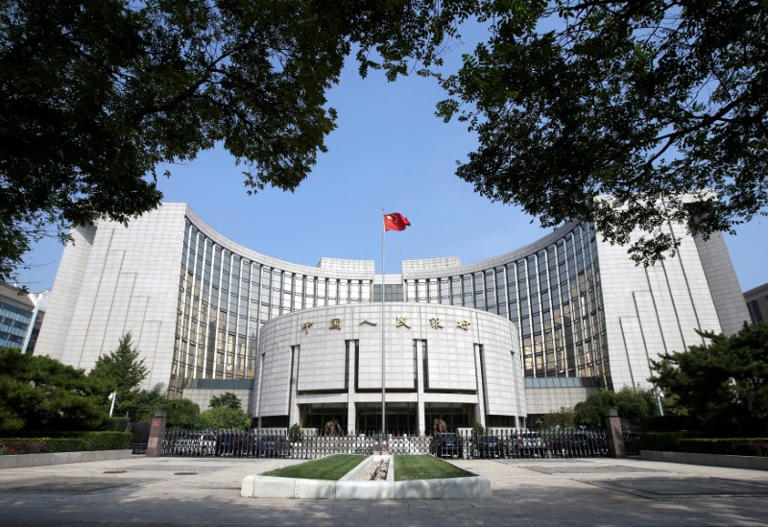China’s bond market, the second largest in the world, has been experiencing significant turbulence recently, marked by intense volatility and intervention from the central bank. This has led to a complex environment for investors, as they navigate the shifting dynamics of a market under heavy regulatory scrutiny amidst a struggling economy.
Recent Market Movements and Interventions
On August 5, 2024, China’s bond market saw a dramatic decline in long-dated bond yields, reaching record lows. This drop was driven by a global trend toward safe-haven assets, including government treasuries, as investors sought stability amidst broader economic uncertainties. In response, China’s central bank, the People’s Bank of China (PBOC), initiated a series of interventions aimed at stabilizing the market and counteracting the rapid decline in yields.
State banks played a crucial role in these interventions, selling off significant amounts of 10-year and 30-year treasury bonds. This strategy was designed to stem the sharp drop in yields and prevent further destabilization. Data and market reports confirm that this selling activity was extensive, reflecting the PBOC’s efforts to influence the market through its largest banking institutions.
In addition to these sales, the PBOC took more direct measures by halting cash injections through open market operations for the first time since 2020. This contributed to the largest weekly cash withdrawal in four months, signaling a deliberate effort to support bond yields and stabilize the market.
Investor Sentiment and Strategic Responses
Despite these interventions, some investors maintain a bullish outlook on China’s bond market. A bond fund manager based in Beijing, who requested anonymity due to the sensitive nature of the topic, expressed confidence in the market’s potential. This optimism is based on several factors: the ongoing economic weakness, deflationary pressures, and a low appetite for riskier assets. The manager’s view reflects a belief that, despite the current volatility, the long-term prospects for government bonds remain favorable.
On the other hand, investors with a more cautious stance, such as treasury futures trader Wang Hongfei, have adopted opportunistic strategies. Wang indicated a preference for short-term trading, navigating the immediate market volatility while remaining flexible in response to regulatory changes. This approach highlights the need for investors to adapt quickly to the evolving market conditions.
Regulatory Measures and Market Impact
The PBOC’s regulatory actions represent a broader strategy to manage financial market stability. Ryan Yonk, an economist at the American Institute for Economic Research, notes that China’s financial markets, including the bond market, are subject to top-down regulation. This means that market interventions are directed by central authorities, a contrast to more market-driven approaches seen in the West. As China’s economic conditions continue to falter, maintaining this level of control over financial markets is becoming increasingly challenging for Chinese officials.
In addition to selling treasuries, the PBOC has taken steps to address potential market manipulation. The central bank has announced investigations into four rural commercial banks suspected of manipulating the bond market. This move aims to restore confidence and ensure fair market practices, reflecting the PBOC’s commitment to maintaining market integrity.
Market Reactions and Analyst Perspectives
The PBOC’s actions have had a noticeable impact on market sentiment. Both 10-year and 30-year treasury futures experienced their first weekly decline in a month, signaling a shift in investor expectations. Analysts like Kiyong Seong from Societe Generale advise caution, highlighting the risks associated with holding long-dated bonds during a period of heightened volatility. Seong suggests that while the bond market may still offer opportunities, the risks of significant declines should not be overlooked.
Tan Yiming, an analyst at Minsheng Securities, describes the current environment as a “sword of Damocles” hanging over the bond market. Despite the challenges, Tan argues that the bond bull market remains viable due to a scarcity of high-yield assets. His strategy involves “buying on the dip,” indicating a belief in the market’s potential for recovery despite short-term setbacks.
Future Outlook for China’s Bond Market
Looking forward, the future of China’s bond market will likely be influenced by several key factors. Chun Lai Wu, head of Asia Asset Allocation at UBS Global Wealth Management, forecasts that bond yields could drift higher over the long term if economic recovery continues and inflation begins to rise. Currently, the 30-year treasury yield stands around 2.37%, down from 3% a year ago. This decline reflects the broader economic challenges and the PBOC’s efforts to stabilize the market.
The bond market’s future will also be shaped by the central bank’s ongoing interventions and the broader economic environment. As China grapples with economic slowdowns and regulatory challenges, the bond market will continue to be a focal point for investors and policymakers alike.
Overall, while the current environment presents significant challenges for China’s bond market, opportunities remain for those who navigate the market with a strategic and informed approach. The evolving situation underscores the complexities of investing in a tightly controlled and fluctuating financial landscape, where regulatory actions and economic conditions play crucial roles in shaping market dynamics.
